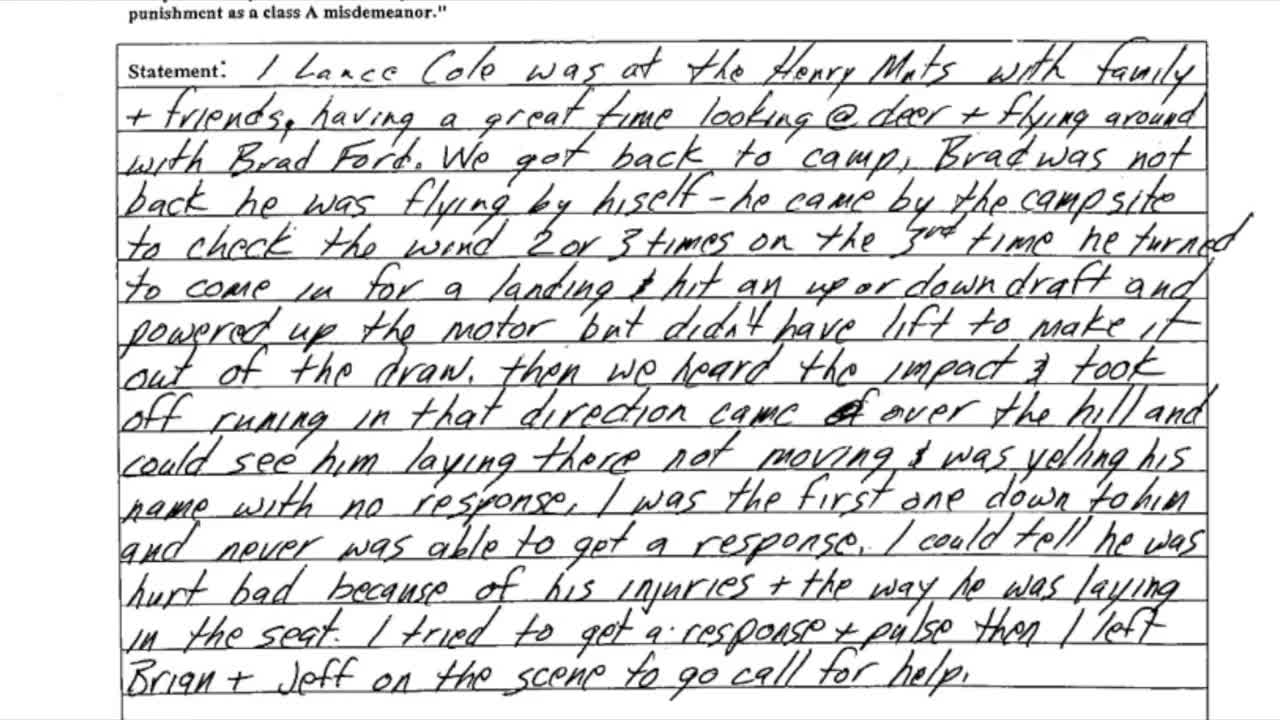Premium Only Content

Powered Parachuting Fatality (Henry Mountains; Bullfrog, Utah)
On February 12, 2011, at 1753 mountain standard time, a Buckeye Breeze LX powered parachute, N75752, impacted terrain while on approach to landing at a wilderness campsite, 30 miles north of the Bullfrog Basin Airport, Bullfrog, Utah. The student pilot operated the experimental category aircraft under the provisions of Title 14 Code of Federal Regulations Part 91. The pilot was fatally injured, and the powered parachute was substantially damaged. Visual meteorological conditions prevailed, and no flight plan had been filed.
Witnesses reported that the pilot flew over their campsite three times to monitor the wind conditions. After the third pass, the pilot appeared to turn to land. Witnesses heard the engine power increase, however, the parachute started to descend steeply until they heard an impact.
Review of this amateur video filmed by a witness at the landing area revealed that the parachute flew low over the landing area at an altitude of 3-4 feet. As the parachute reached the end of the landing area and the canyon ledge, the engine sound increased in pitch, and the parachute pitched up abruptly, followed by a rapid descent and 180-degree turn before it dropped out of the video frame, descending beneath the canyon ledge. The wreckage was located below the canyon ledge on steeply sloped terrain.
At 1655, the nearest weather reporting station located about 19 miles north of the campsite reported calm wind; clear skies; 60-statute miles of visibility; temperature 9 degrees Celsius (C); and dew point -6 degrees C. At the accident site, the home video revealed clear skies and no evidence of any adverse wind conditions.
The National Transportation Safety Board determined the probable cause(s) of this accident to be the pilot’s loss of control while maneuvering to land at an off-airport site.
-
 LIVE
LIVE
Matt Kohrs
1 hour agoLIVE! Nvidia Earnings Call || NVDA Stock Reaction
429 watching -

Darkhorse Podcast
2 hours agoThe 291st Evolutionary Lens with Bret Weinstein and Heather Heying
6.24K5 -
 2:34:01
2:34:01
Steven Crowder
2 hours agoMinnesota Catholic School Shooting Update - Shooter & Manifesto
189K241 -
 LIVE
LIVE
Stephen Gardner
15 minutes ago🚨CHICAGO Mayor PISSED as Residents BEG Trump to send National Guard
981 watching -
 LIVE
LIVE
The HotSeat
39 minutes agoChristian School Shooting in Minnesota – Faith Under Fire & Prophecy Being Fulfilled
339 watching -
 UPCOMING
UPCOMING
Film Threat
16 hours agoPEACEMAKER BLOWS GUNN'S DC! PLUS ALIEN: EARTH AND DEXTER RESURRECTION | Hollywood on the Rocks
490 -
 1:05:34
1:05:34
The Kevin Trudeau Show Limitless
5 hours agoKevin Trudeau Uncensored The Untold Story Of Wealth, Health & Business Success
254 -
 LIVE
LIVE
StoneMountain64
3 hours agoHUNTING FOR THE FIRST WIN BACK ON WARZONE
972 watching -
 LIVE
LIVE
Jeff Ahern
1 hour agoNever woke Wednesday with Jeff Ahern
321 watching -
 4:38
4:38
Michael Heaver
5 hours agoBetrayed UK Reaches CRITICAL Moment
4.06K5